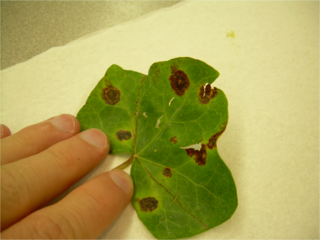Genus is a taxonomic rank used in the biological classification of living and fossil organisms as well as viruses. In the hierarchy of biological classification, genus comes above species and below family. In binomial nomenclature, the genus name forms the first part of the binomial species name for each species within the genus.

Extinction is the termination of a taxon by the death of its last member. A taxon may become functionally extinct before the death of its last member if it loses the capacity to reproduce and recover. Because a species' potential range may be very large, determining this moment is difficult, and is usually done retrospectively. This difficulty leads to phenomena such as Lazarus taxa, where a species presumed extinct abruptly "reappears" after a period of apparent absence.

The International Union for Conservation of Nature (IUCN) Red List of Threatened Species, also known as the IUCN Red List or Red Data Book, founded in 1964, is an inventory of the global conservation status and extinction risk of biological species. A series of Regional Red Lists are produced by countries and organizations, which assess the risk of extinction to species within a political management unit.

Colubridae is a family of snakes. With 249 genera, it is the largest snake family. The earliest species of the family date back to the Oligocene epoch. Colubrid snakes are found on every continent except Antarctica.

Rodolfo AmandoPhilippi was a German–Chilean paleontologist and zoologist. Philippi contributed primarily to malacology and paleontology. His grandson, Rodulfo Amando Philippi Bañados (1905-1969), was also a zoologist and in order to avoid confusion in zoological nomenclature, the elder is referred to as "Philippi [Krumwiede]" to distinguish him from his grandson "Philippi [Bañados]".

The conservation status of a group of organisms indicates whether the group still exists and how likely the group is to become extinct in the near future. Many factors are taken into account when assessing conservation status: not simply the number of individuals remaining, but the overall increase or decrease in the population over time, breeding success rates, and known threats. Various systems of conservation status are in use at international, multi-country, national and local levels, as well as for consumer use such as sustainable seafood advisory lists and certification. The two international systems are by the International Union for Conservation of Nature (IUCN) and The Convention on International Trade in Endangered Species of Wild Fauna and Flora (CITES).

Xanthomonas campestris is a gram-negative, obligate aerobic bacterium that is a member of the Xanthomonas genus, which is a group of bacteria that are commonly known for their association with plant disease. The species is considered to be dominant amongst its genus, as it originally had over 140 identified pathovars and has been found to infect both monocotyledonous and dicotyledonous plants of economical value with various plant diseases. This includes "black rot" in cruciferous vegetables, bacterial wilt of turfgrass, bacterial blight, and leaf spot, for example.

The Veracruz moist forests is a tropical moist broadleaf forests ecoregion in eastern Mexico.
In biology, a species is often defined as the largest group of organisms in which any two individuals of the appropriate sexes or mating types can produce fertile offspring, typically by sexual reproduction. It is the basic unit of classification and a taxonomic rank of an organism, as well as a unit of biodiversity. Other ways of defining species include their karyotype, DNA sequence, morphology, behaviour, or ecological niche. In addition, paleontologists use the concept of the chronospecies since fossil reproduction cannot be examined.
Johann Gustav Fischer was a German herpetologist.

Dipsadinae is a large subfamily of colubroid snakes, sometimes referred to as a family (Dipsadidae). They are found in most of the Americas, including the West Indies, and are most diverse in South America. There are more than 700 species.

The banded snail sucker is a species of snake of the family Colubridae.

Geophis annuliferus, also known as the western snail-eating snake, is a snake of the colubrid family. It is endemic to Mexico.

Geophis sartorii, also known commonly as Sartorius' snail-sucker and the terrestrial snail sucker, is a species of snake in the family Colubridae. The species is native to southern North America and Central America. There are two recognized subspecies.
Tropidodipsas fischeri, Fischer's snail-eating snake, is a species of snake in the family, Colubridae. It is found in Mexico, Guatemala, El Salvador, and Honduras.
Tropidodipsas guerreroensis, the Guerrero snail sucker, is a species of snake in the family, Colubridae. It is found in Mexico.
Tropidodipsas philippii, Philippi's snail-eating snake, is a species of snake in the family, Colubridae. It is found in Mexico.
Tropidodipsas repleta is a species of snake in the family, Colubridae. It is found in Mexico.
Tropidodipsas tricolor, the tricolor snail sucker, is a species of snake in the family, Colubridae. It is found in Mexico.
Tropidodipsas zweifeli, Zweifel's snail-eating snake, is a species of snake in the family, Colubridae. It is found in Mexico.










